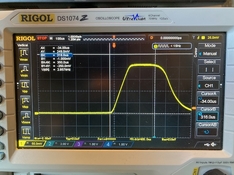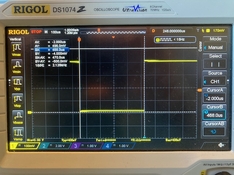Hi Bjpirt,
Welcome to the world of shutter tester design

)
Neat idea to build everything into the film back. Although this does limit future options.
Sending everything to an app is the modern way, some people have asked me for this feature, but I prefer stand-alone test kit.
I use a TFT screen and/or dump the results to the PC screen & SD card.
As for (in)accuracy, you will suffer the same problem as (almost) every other home-brew or garden-shed design.
The higher the shutter speed, the greater the error will be.
Some people use an oscilloscope & get the same readings (they will, assuming the coding is correct) but the scope is measuring the same error.
You are trying to measure a photon which has zero (debatable) width, with a sensor that has width.
So you are not only measuring the exposure, but also the width of the sensor..
As the 'shutter speed' (which of course remains constant) increases, the inaccuracy will exponentially increase.
For an actual 1/500s correct 'shutter speed' one can expect a reading of between 1/300 and 1/400s using a sensor & oscilloscope or microcontroller just measuring pulse length. This of course will vary on sensor type, light intensity etc.
Putting a mask to make the sensor smaller may help a bit, but now you have the inverse square law working against you, the sensor sees less light, so will trigger later.
Using photo-resisters will also suffer the same fate and as they are larger and circular can be even more problematic than a modern fast switching photo-transistor.
Next we have the light source. The last thing you want is a diffused light. Light will be hitting the sensor from random angles, creating inaccuracy.
Ideally one wants a collimated light source.
Again the problem of inverse square law arises, start putting masks in front of sensors or varying the light intensity and the sensor trigger point will change. IC Racer posted a nice graph showing this, in another thread.
If using PWM to vary LED output, the sensor will see the pulses as shutter actuations & go nuts. I have written code to reject all pulses above 5khz, it works but I do not like it as it is introducing error. Ok only 2Ms but still an error. You also have the inverse square law again.
1970's professional testers would have a bespoke long, thin photo-resister. This was then hidden behind a thin slot. So it still retained a large, but narrow surface to see the light.
Whether they do anything else as well, I do not know, they are full of 1970s logic chips rather than microprocessors.
As for the open-source,'insructables' youtubes etc, that I have looked at, none of these account for the errors described above.
I'm sure if side-by side comparisons were made with 'professional' testers and the likes of mine & Matts, they would all vary as no doubt we all have differing ideas of how to calibrate for the issues described above.
As you can see, one thinks making a shutter tester is easy, until one starts to do so.
Ask me how I know

)
Good luck with your design

)






 )
)


